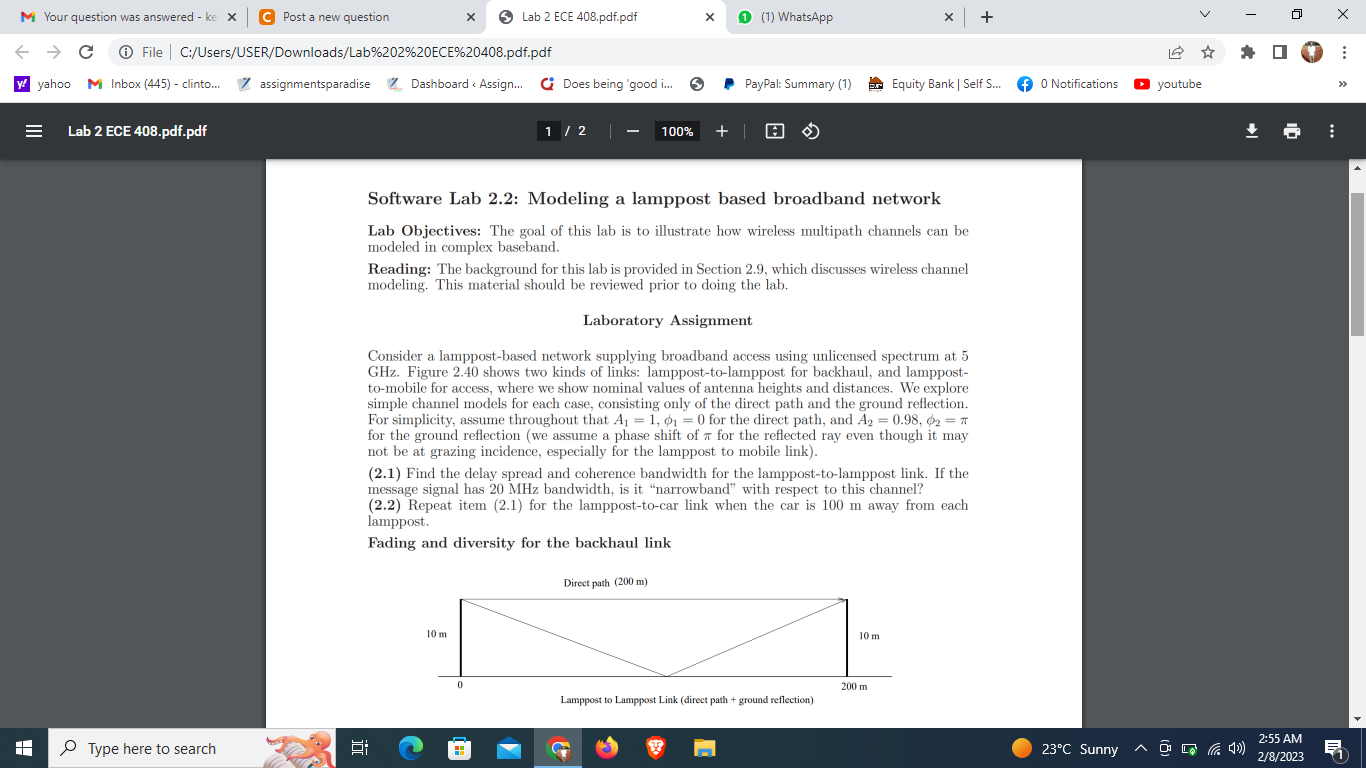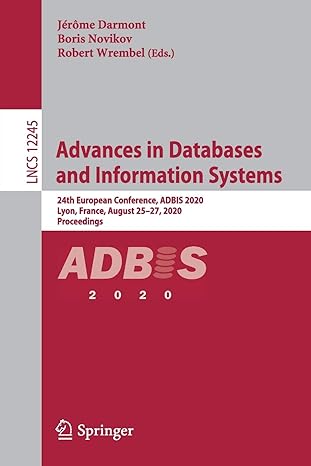


Software Lab 2.2: Modeling a lamppost based broadband network Lab Objectives: The goal of this lab is to illustrate how wireless multipath channels can be modeled in complex baseband. Reading: The background for this lab is provided in Section 2.9, which discusses wireless channel modeling. This material should be reviewed prior to doing the lab. Laboratory Assignment Consider a lamppost-based network supplying broadband access using unlicensed spectrum at 5 GHz. Figure 2.40 shows two kinds of links: lamppost-to-lamppost for backhaul, and lamppostto-mobile for access, where we show nominal values of antenna heights and distances. We explore simple channel models for each case, consisting only of the direct path and the ground reflection. For simplicity, assume throughout that A1=1,1=0 for the direct path, and A2=0.98,2= for the ground reflection (we assume a phase shift of for the reflected ray even though it may not be at grazing incidence, especially for the lamppost to mobile link). (2.1) Find the delay spread and coherence bandwidth for the lamppost-to-lamppost link. If the message signal has 20MHz bandwidth, is it "narrowband" with respect to this channel? (2.2) Repeat item (2.1) for the lamppost-to-car link when the car is 100m away from each lamppost. Fading and diversity for the backhaul link Figure 2.40: Links in a lamppost-based network. First, let us explore the sensitivity of the lamppost to lamppost link to variations in range and height. Fix the height of the transmitter on lamppost 1 at 10m. Vary the height of the receiver on lamppost 2 from 9.5 to 10.5m. (2.3) Letting hnom denote the nominal channel gain between two lampposts if you only consider the direct path and h the net complex gain including the reflected path, plot the normalized power gain in dB,20log10hnomh, as a function of the variation in the receiver height. Comment on the sensitivity of channel quality to variations in the receiver height. (2.4) Modeling the variations in receiver height as coming from a uniform distribution over [9.5,10.5], find the probability that the normalized power gain is smaller than 20dB ? (i.e., that we have a fade in signal power of 20dB or worse). (2.5) Now, suppose that the transmitter has two antennas, vertically spaced by 25cm, with the lower one at a height of 10m. Let h1 and h2 denote the channels from the two antennas to the receiver. Let hnom be defined as in item (2.3). Plot the normalized power gains in dB, 20log10hnomhi,i=1,2. Comment on whether or not both gains dip or peak at the same time. (2.6) Plot 20log10hnommax(h1h2), which is the normalized power gain you would get if you switched to the transmit antenna which has the better channel. This strategy is termed switched diversity. (2.7) Find the probability that the normalized power gain of the switched diversity scheme is smaller than 20dB. (2.8) Comment on whether, and to what extent, diversity helped in combating fading. Fading on the access link Consider the access channel from lamppost 1 to the car. Let hnom(D) denote the nominal channel gain from the lamppost to the car, ignoring the ground reflection. Taking into account the ground reflection, let the channel gain be denoted as h(D). Here D is the distance of the car from the bottom of lamppost 1, as shown in Figure 2.40. (2.9) Plot hnom and h as a function of D on a dB scale (an amplitude is expressed on the dB scale as 20log10 ). Comment on the "long-term" variation due to range, and the "short-term" variation due to multipath fading









